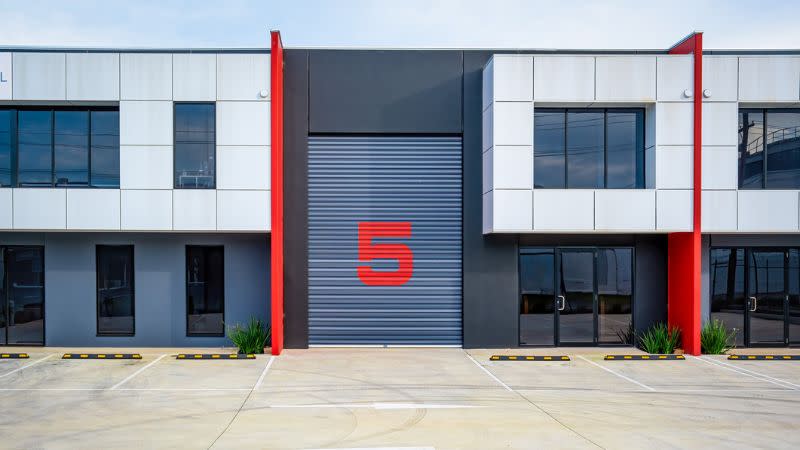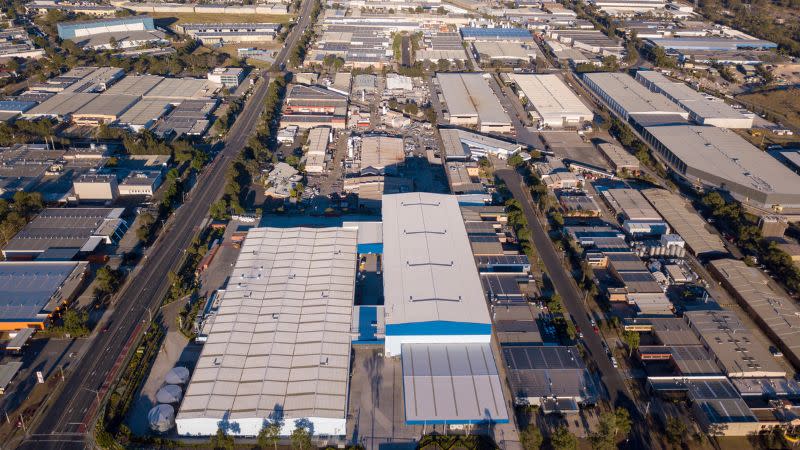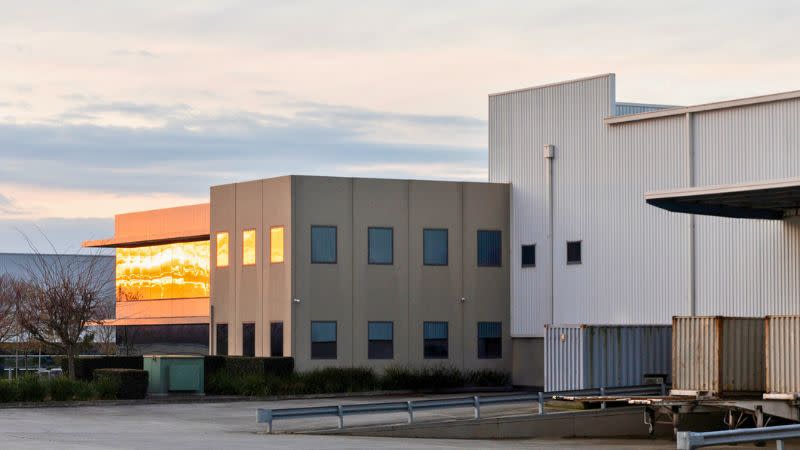Australian Industrial Vacancies Tightest in World

- by Admin
- July 11, 2024

Australia’s industrial and logistics market is still the golden child of the commercial property sector, posting the lowest vacancy rate in the world during the first half of 2024.
The national average vacancy rate in the sector was 1.9 per cent, with Perth holding the lowest vacancy rate in the country at 1.2 per cent, according to CBRE’s H1 2024 Australia’s Industrial and Logistics Vacancy report.
And while the report showed a lift in vacancy rates for most markets across Australia, particularly Sydney, Brisbane and Melbourne, overall vacancy remains under 2 per cent.
CBRE head of industrial and logistics research Sass Jalili said they were seeing a rise in the vacancy rate across most cities as demand normalised and greater sub-lease space was added to the market.
“Despite the rise in space availability, we still do not expect to see the national average vacancy rate surpass 4 per cent in 2024,” Jalili said.
The report said national net absorption had fallen to the lowest level on record with notable decreases across all eastern seaboard cities.
Gross take-up of floorspace for the first half of 2024 had reached 0.9 million square metres as occupier demand normalised with just 50 per cent of take-up the result of tenant expansion.
“Sub-lease activity has multiplied across the market but has not significantly affected the vacancy rate,” Jalili said.
“Over the past six months sub-lease activity has been most prominent in the Sydney market, accounting for 50 per cent of vacant floorspace.”
The report shows rental growth has slowed during the past 12 months and that incentives began to rise in this year.
The current year-on-year growth rate for national super prime grade face rents (supply-weighted average) is 12 per cent (as at preliminary data from the second quarter of this year).
Rent growth is expected to further reduce over 2024 and incentive levels will continue to rise across all markets.
Vacancy trend by city
CBRE industrial and logistics regional director Michael O’Neill said that during the first quarter of the year, transaction activity was slow, “but that is not surprising given the incredible rental growth of previous years owing to low vacancy”.
“High prevailing rents, softening consumer demand, higher outgoings, and reduced sense of urgency all contributed to a slower start for all markets,” O’Neill said.
“This has resulted in vacancy approaching or exceeding 2 per cent in nearly all markets. Overall, we’re seeing the market begin to normalise to pre-pandemic conditions.”
Sydney
Vacancy levels have risen in Sydney from 0.5 per cent in the second half of 2023 to 2 per cent, largely a result of vacancy rises in the outer western markets.
Sub-lease space represents around 50 per cent of the total vacant area in the Sydney market (for space under 5000sq m). Greater sub-lease activity has been evident during the past 12 months in the Sydney market.
CBRE national director Cameron Greir said vacancy in infill areas in Sydney remained extremely tight, with these sub-markets still among some of the tightest vacancy rates globally.
“We are, however, seeing a softening on the outer ring markets such as the outer north-west and outer south-west due to increased speculative activity and sub-lease space hitting the market,” he said.
Melbourne
The Victorian capital’s vacancy rate has increased to 2 per cent. Increases were recorded across most precincts except the Western precinct, which showed a marginal decline, but still holds the highest vacancy rate in the Melbourne market.
Net absorption levels have also decreased in the first half of the year but remain the strongest in the country. Vacancy levels in the east/south-east are the lowest in Melbourne and expected to remain at sub-2 per cent over the remainder of the year.

CBRE state director Thomas Murphy said occupier demand throughout Melbourne had been subdued throughout the first half of 2024, with leasing absorption down on our previous five-year average.
“With limited occupier activity and leasing uptake we have started to see vacancy rates trend up, albeit we are still in a low supply environment,” Murphy said.
“Face rents have held; however, effective rents have reduced slightly owing to incentives trending upwards.”
Brisbane
The River City has the highest vacancy rate in Australia at an average of 2.7 per cent.
The greatest upward movement in the vacancy rate during the past six months was recorded within the western corridor (up 300 basis points) and the north precinct (up 200 points).
Despite greater sub-lease activity, sub-lease space on the market represents only around 16 per cent of total vacant area in Brisbane.
Net absorption in Brisbane dropped by more than 50 per cent when compared to the second half of 2023.
CBRE state director Matthew Frazer-Ryan said a two-speed occupier market had evolved within Greater Brisbane.
“Demand for existing buildings has been particularly weak with limited transaction volumes above 3000sq m, and the bulk of transactions that did complete were primarily for prime or speculative developed assets—again reinforcing the flight-to-quality theme,” Frazer-Ryan said.
“Comparatively we saw very strong demand for new purpose-built facilities with over 350,000sq m of occupier briefs looking for design and construct solutions to support growth and improved business operations in South-East Queensland.
“We expect a large portion of these occupiers seeking new greenfield solutions to finalise transactions in the coming six months.”

Perth
Vacancies in the West increased and Perth now has the lowest rate in Australia at 1.2 per cent.
The upward movement was the result of a significant increase in the east precinct, increasing by 160 basis points. Vacancy in the north and the south precincts fell during the past six months.
Sub-lease space represents only 13 per cent of the total space vacant and is only prevalent in the east and south precincts.
Net absorption increased slightly in 1H24, compared to 2H23. Gross take-up continues to be concentrated in the east and south precincts—each making up 44 per cent of lease transactions in 1H24.
CBRE senior director Jarrad Grierson said that the strongest population growth rate in Australia and a strong resources sector buoyed by strong commodity prices continued to drive resilient occupier demand in Perth despite the headwinds of rising interest rates during the past 24 months.
“The WA Government’s 2024-25 Budget forecasts solid economic growth to continue in the year ahead which will continue to drive industrial demand,” Grierson said.
“A high pre-commitment rate is likely to mean that Perth’s industrial vacancy will continue to remain low.”
Adelaide
The SA capital’s vacancy rate fell to 1.3 per cent—the only market to record a fall.
Net absorption lifted in 1H24, compared to 2H23, with new floorspace added to the market readily absorbed.
It’s expected the Adelaide market will follow a similar trend to other markets around the country, with vacancy levels rising. However, given the tight supply pipeline, the vacancy rate is expected to remain at sub-4 per cent during the next 6 to 12 months.

CBRE state director Jordan Kies said that the buyer pool for the sub-$30-million price point in South Australia had somewhat thinned out due to a concerted focus on the eastern seaboard.
“The sub-$20-million market, however, continues to defy the odds with more local private investors, syndicators, developers and/or owner-occupiers all still actively seeking value-add opportunities,” Kies said.
“There are several speculative developments in the north-est that are all nearing completion at the same time and beginning to show signs of saturation in this geography.
“The demand from occupiers relocating from the South Road compulsory acquisitions is nearing the end, noting most companies will require premises by the end of 2024, most of which have already sourced alternate premises.
“Occupier requirements remain buoyant with a healthy number of requirements currently out in the market. Tenants are now however more particular about the location and have more choice, compared to the previous two to three years.”
The Latest News
-
September 20, 2024Former Italian galloper in Caulfield Cup and Melbourne Cup bid
-
September 20, 2024Who will replace Graham Arnold as Socceroos coach? Candidates to take on Australia top job | Sporting News Australia
-
September 20, 2024Graham Arnold departs as Head Coach of the Subway Socceroos
-
September 20, 2024Travis Head powers Australia to big win in first ODI | Betting Site
-
September 20, 2024Palestinians in Australia left in limbo as visa doesn’t allow for work or study rights



